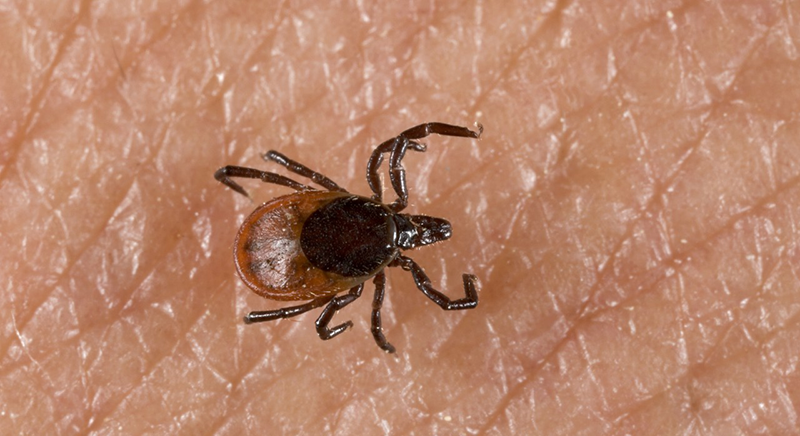Diagnosis and Treatment of Lyme Disease Remain Controversial

One national patient survey suggests that more than 60 percent of cases take more than two years to diagnose.
If you’ve contracted Lyme disease, you know about the pain and cascade of symptoms caused by a bite from a tick the size of a pinhead.
What you might not know is that a long-held disagreement over diagnosis and treatment can make it difficult for anyone, current or potential Lyme patients alike, to know what action to take.
Untreated Lyme disease can produce a wide range of symptoms depending on the stage of infection, says the Centers for Disease Control and Prevention (CDC) These include fever, the classic “bulls-eye” rash, facial paralysis, and arthritis. Any of those symptoms should prompt you to seek medical advice.
However, necessary lab tests for Lyme disease are currently unreliable, says San Francisco physician and tick-borne disease expert Ray Stricker, MD, president of the International Lyme and Associated Diseases Society (ILADS). He claims they miss more than half of Lyme cases.
But the Infectious Diseases Society of America (ISDA) contradicts Stricker and ILADS, saying Lyme disease is easily diagnosable and treatable. Many medical experts, however, say the disease requires a high degree of clinical suspicion to diagnose, since symptoms are generally not specific to Lyme disease and many patients don’t remember or report getting bitten by a tick.
As part of the long-held feud with ISDA, ILADS also says that a typical course of antibiotics for 30 days is “often inefficient.”
You, the current or potential Lyme disease patient, is in the middle of the crossfire. One national survey indicates that more than 60 percent of cases take more than 2 years to diagnose.
Canadian Theresa Stadnyk’s rapid decline in health included persistent headaches, dizziness, blurred vision, and unexplainable collapses. Over the course of the week after she was admitted to a hospital, her joints ached, and her face went numb. Then, she had a stroke while she lay in a seizure monitoring room.
The family was told that Lyme disease “didn’t exist” where they lived in Alberta. Finally, she was diagnosed after her blood samples were sent to the Centers for Disease Control and Prevention (CDC) in the United States.
Celebrated author Amy Tan also shared her Lyme disease story, admitting that she passed off early symptoms — a stiff neck, insomnia, a constant headache, and a bad back followed by a frozen shoulder – as the aftermath of “too much plane travel.”
Her advice today: “get treated early and adequately. Don’t wait as I did, and let a treatable disease turn into a chronic one.”
The Lyme disease bacterium, Borrelia burgdorferi, is spread through the bite of infected blacklegged (deer) ticks, the CDC explains. There are two species, one that infects people in the Eastern half of the U.S. and one on the Pacific coast eastward.
Ticks can attach to any part of the human body but are often found in hard-to-see areas such as the groin, armpits, and scalp. In most cases, the tick must be attached for 36 to 48 hours or more before the Lyme disease bacterium can be transmitted, the CDC adds.
“Appropriate and early antibiotic treatment can successfully treat many with the disease,” agrees Richard Horowitz, MD, a Hyde Park, NY, internist and author or “Why Can’t I Get Better? Solving the Mystery of Lyme and Chronic Disease.”
“However… some people manifest with puzzling systemic symptoms that can occur throughout the body, which lead to complex lab results,” he adds. Because of that complexity, Lyme disease diagnosis and treatment has confounded the medical profession for more than 25 years and perpetuated the controversy, Horowtiz believes.
The two Lyme disease organizations also disagree about the use of antibiotics for persistent systems that continue after treatment. ILADS believes treatment with antibiotics may or may not help; IDSA believes the risk of antibiotic treatment outweigh the benefits.
The CDC agrees with the ISDA, saying that Lyme patients can have long-term damage to the nervous system or joints, which it labels as “post-Lyme disease syndrome.”
Many Lyme patients have gone public, insisting their diagnosis and proper treatment have been delayed while their symptoms expanded and worsened.
This viewpoint has been supported by patient advocacy groups such as lymedisease.org, doctors affiliated with them, and outspoken celebrities including singer Avril Lavigne, who went on national television to say her treatment followed “months” of being told she was “crazy.”
The camps do agree on some aspects of the disease. They concur that Lyme must be viewed as a multifactorial disease because the ticks carry other bacteria that cause co-infections. They also agree that better diagnosis and treatment is needed for the whole range of bacteria you have to deal with.
They also agree that the best treatment is prevention. If you’re in the woods or any other locale that is known to have deer ticks, cover yourself, even on the hottest summer day. Use insect repellant that you know to be effective and shower immediately after you get home. You should also check for ticks among family members and pets every day.
There is a proper way to remove ticks. Make sure you review it carefully before you proceed, but remove them as soon as possible.
Research toward better diagnostic tools and a broader range of treatment is advancing, but slowly.
If you believe you have Lyme disease, have been diagnosed with it, or live in an area where it has been reported, the second best thing you can do is educating yourself. Be your own advocate and pull yourself out of the middle of the debate.
In fact, you should be as aggressive as the disease itself in being properly diagnosed and treated. Despite who may be right in the end, your ultimate goal is to regain your health and vitality, whatever it takes.
Updated:
March 20, 2020
Reviewed By:
Christopher Nystuen, MD, MBA